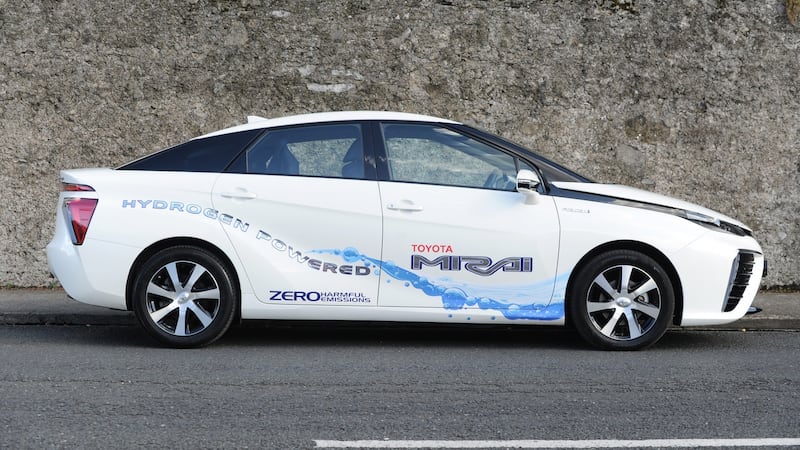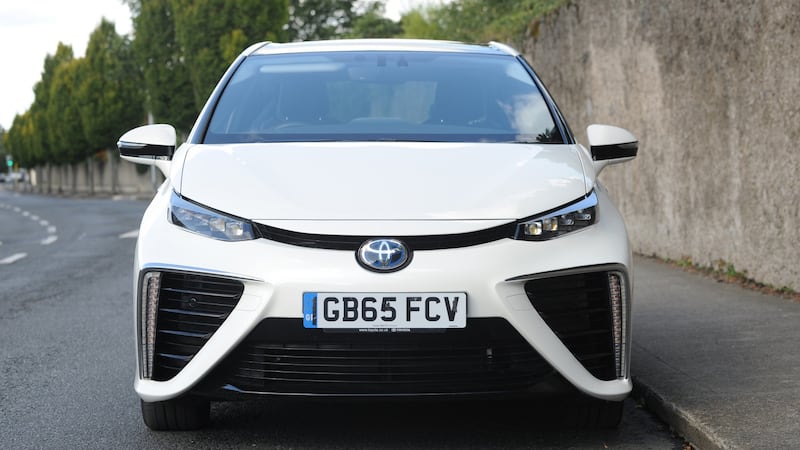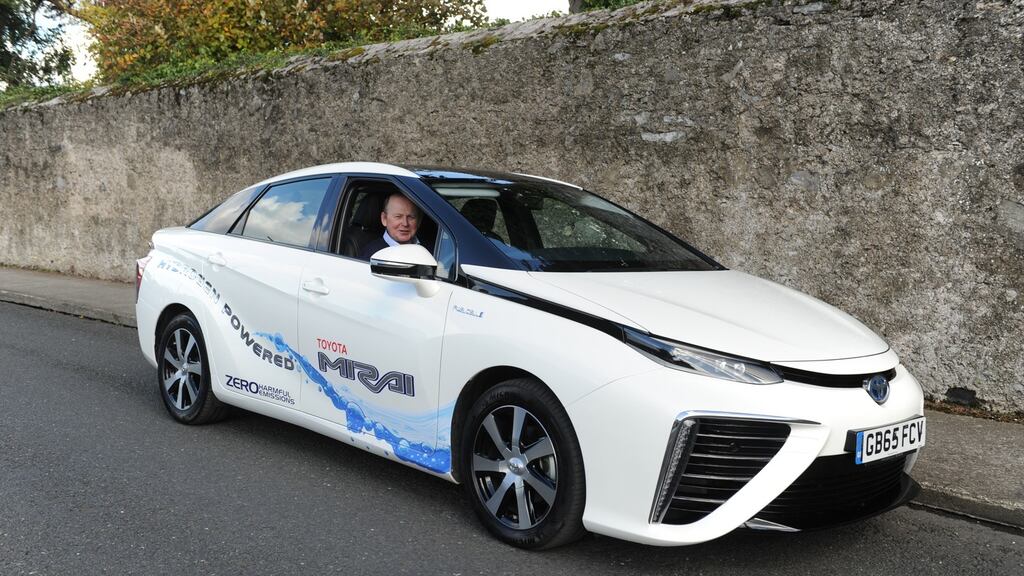It is unusual for someone from the motor industry not to revert quickly to the standard sales push about their latest models including a bewildering range of features, size of engine and performance, especially in accelerating and braking.
But that doesn’t apply to the first hydrogen-fuelled car to arrive on Irish soil that has been purring its way around the countryside in recent days. Toyota’s Mirai would probably cost in the order of €80,000, but there is no method of refuelling it here anyway.
The car is not part of a sales push, insists Mark Teevan, director of strategy, innovation and corporate affairs with Toyota Ireland. Its presence shows “the hydrogen-fuelled car is real”, and it was brought to Ireland to stimulate discussion about the need for hydrogen infrastructure in the form of refuelling stations if Ireland is to follow other major economies in supporting environmentally-sound technology.


Critically, the Mirai generates “no emissions other than water”, and that is a big claim, given huge controversy over cheating by the motor industry about emissions from diesel cars - notably their output of toxic compounds such as nitrous oxide in real driving conditions.
The petrol car has been in the dock primarily because of its CO2 emissions linked to global warming.
The Mirai confirms hydrogen-fuelled cars, buses and trucks are going to be part of the mix in the electrification of motoring that “will increase dramatically after 2020”, he adds – coinciding with the demise of petrol and diesel cars.
The “energy cycle” in the Toyota Mirai is easily summarised: Adding 50 litres of water to five kgs of hydrogen gas delivers a range of 300 miles – it costs between €2 per kg and €9 per kg currently.
The car’s environmental credentials are enhanced by the ability to generate hydrogen by a process of electrolysis powered by renewable energy sources – such as wind, solar or hydro power – and then stored for use. This fits well with Toyota’s intention to have all aspects of its business decarbonised by 2050.
The safety concerns about hydrogen have been addressed. In short, a perforated fuel tank, for instance, results in rapid and safe evaporation of the gas, Mr Teevan explains.
In addition, the sedan has been built on the back of almost 20 years of know-how from developing hybrid technology.
It now has the status of being the world’s first dedicated mass-produced hydrogen fuel cell vehicle.
A total of 3,000 vehicles a year are being produced, and the car is for sale in Japan; the United States and seven EU countries. From 2020, the second-generation Mirai (production will then be at 30,000 cars a year) is expected to sell for 50 per cent less, and to achieve price parity with the diesel car by 2025.
A reasonable infrastructure for starters, Mr Teevan believes, would be providing refuelling points along the Irish motorway network and in all major cities and towns.
Stations are expensive, ranging from €500,000 to €2 million, though costs came down by 20 per cent in the past year. Germany are leaders in Europe, with government support ensuring 100 stations in place by the end of the year.
Various form of electric vehicles (EVs), produced by most major car brands, are going to be part of the world of decarbonised motoring, which is set to accelerate from 2020. But they are best suited to shorter journeys and urban commuting, Toyota believes.
EVs with a 500km range are imminent but will come with bigger batteries which are heavy and need long charging times. Standard refuelling with the hydrogen car is three minutes.
“There is no one totally correct solution to the future of transport,” Mr Teevan notes. EVs will be good for short journeys; hybrid and plug-in hybrid for longer use, and fuel cells for long-distance and larger vehicles.
The Mirai, complete with distinctive oxygen in-take vents, has many of the attributes of a standard EV or hybrid: Smooth and swift acceleration, and lower noise compared to cars with conventional (and invariably polluting) combustion engines.
Its presence in Europe is taking root, but whether that will soon include Ireland depends on fuel station availability.









